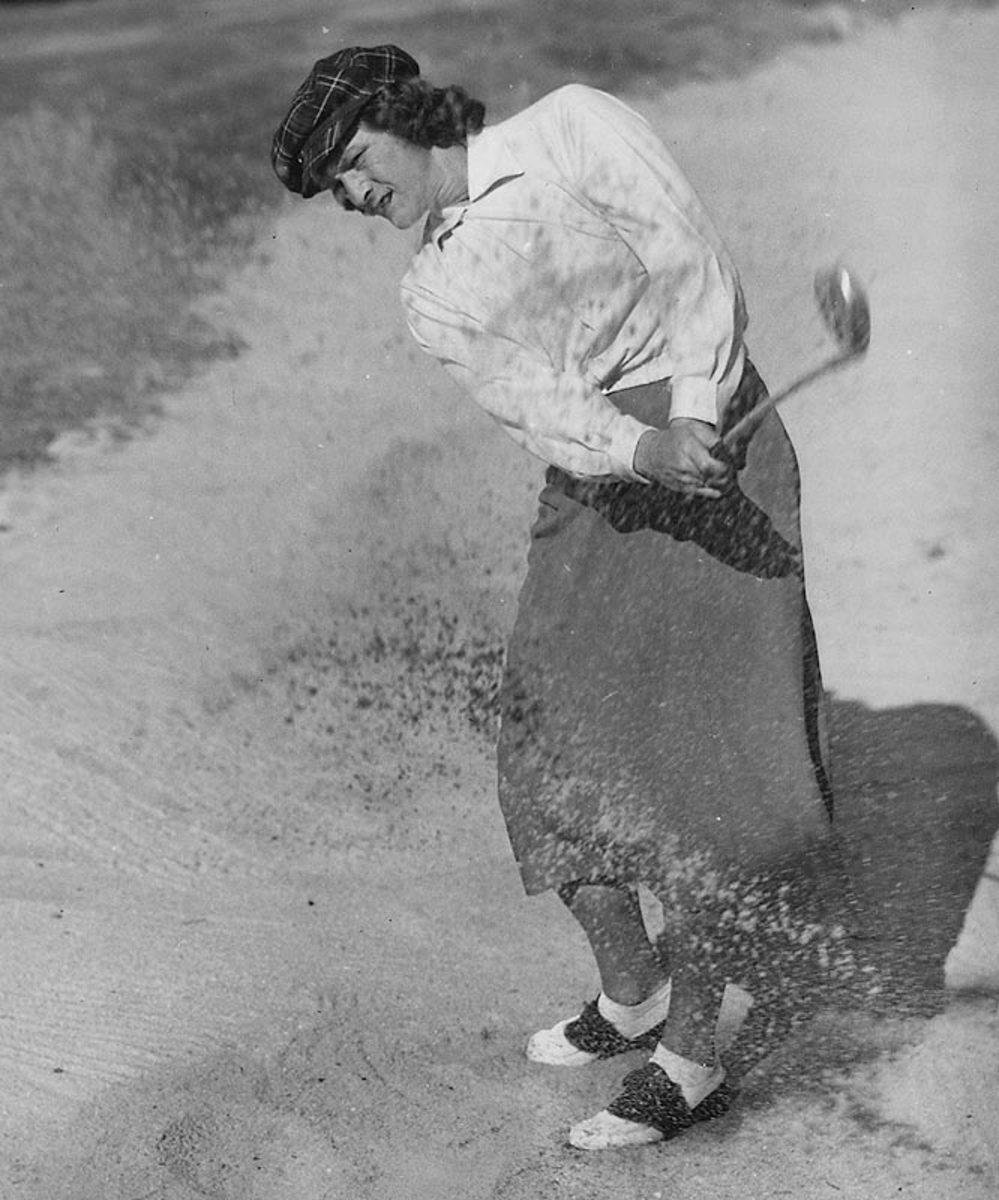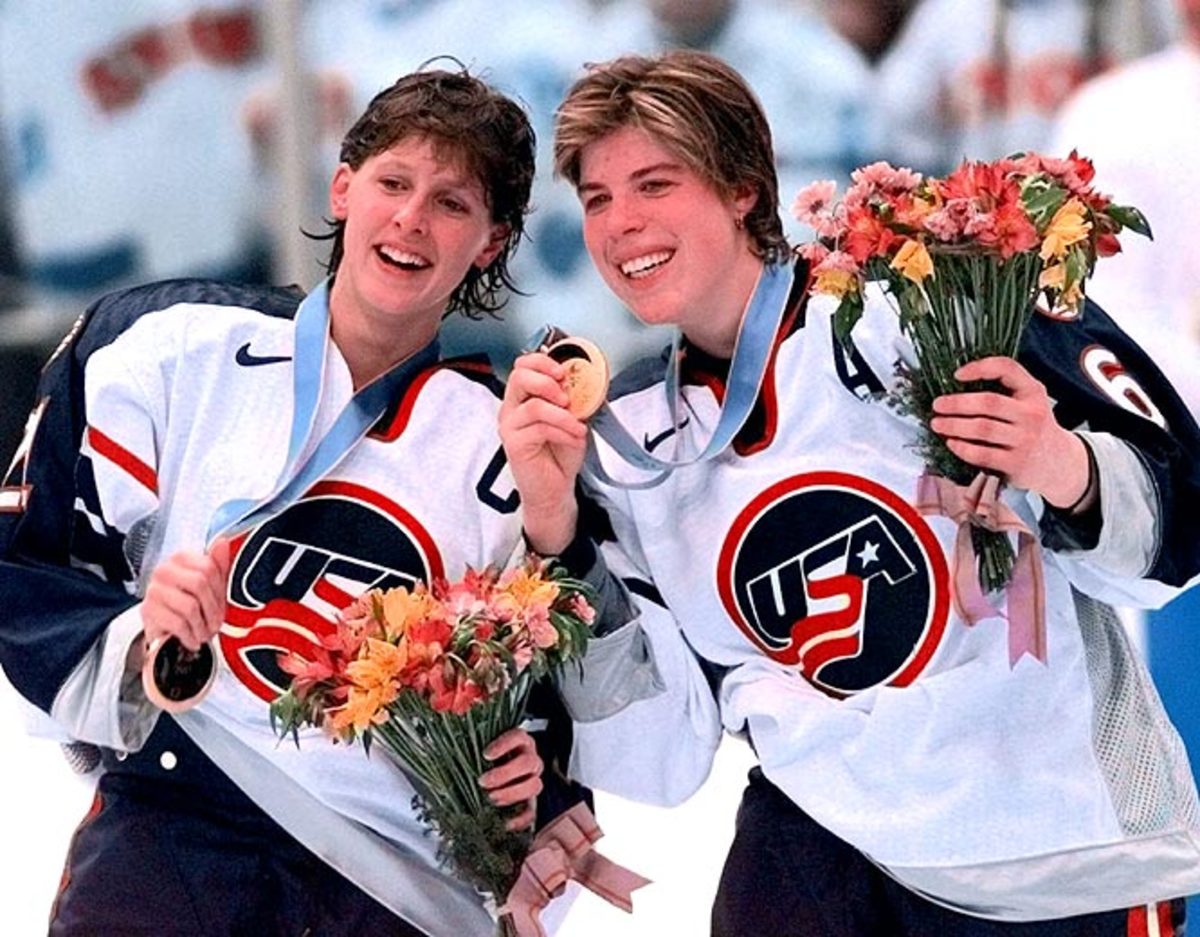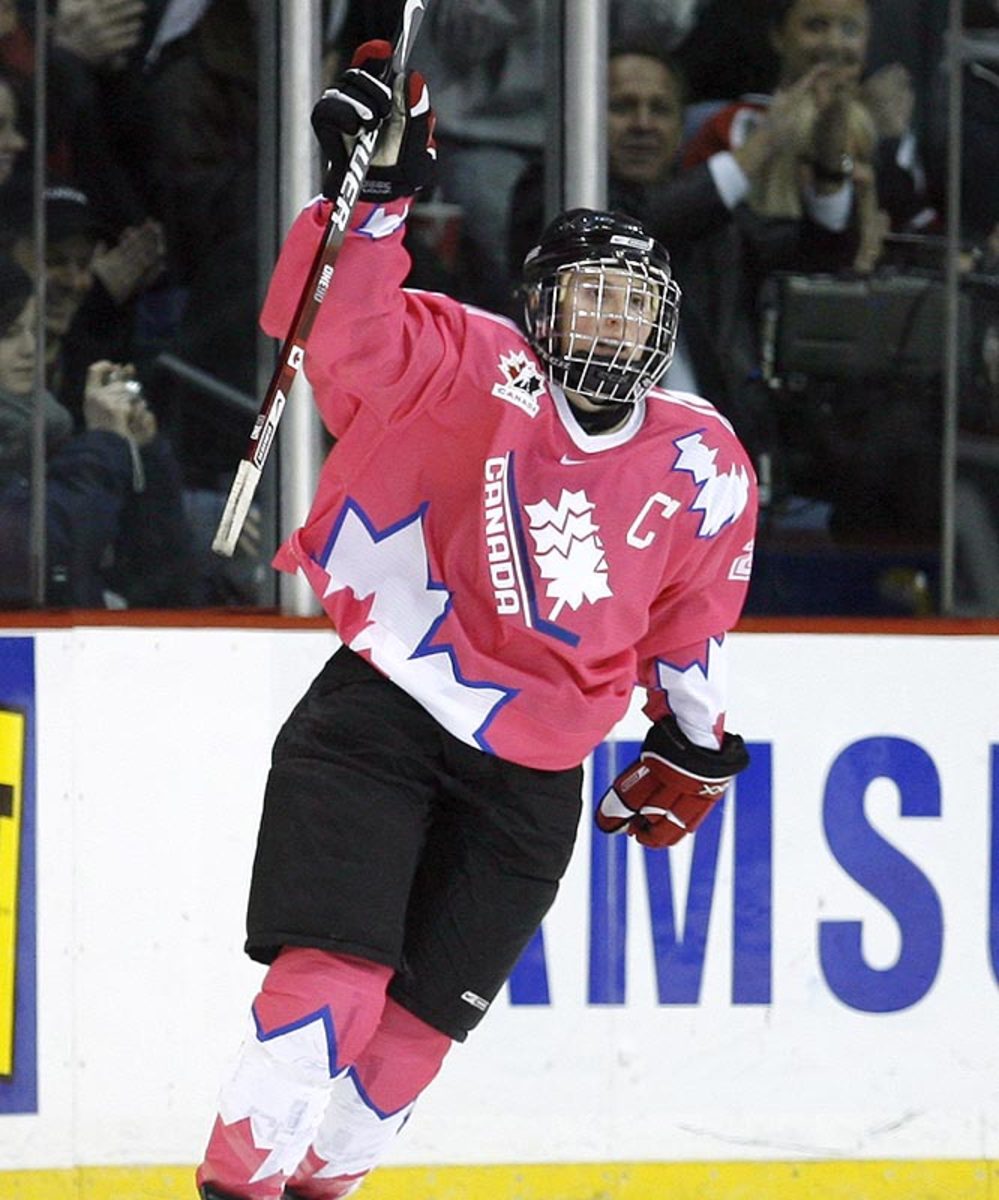NFL hires first full-time female official

The NFL has hired its first time full-time female official, the league announced Wednesday.
Sarah Thomas, a native of Mississippi who began her officiating career in high school, worked games before leaving to continue her career in pharmaceutical sales. She was then contacted by Conference USA, and began working for the conference in 2007. She became the first woman to officiate a bowl game in 2009.
Thomas then joined the NFL’s Officiating Development Program, worked some New Orleans Saints' training camps, and also officiated a NFL preseason game last August.
Thomas, who will be one of nine new officials next season, will be a line judge.
[daily_cut.nfl]
Thomas told NFL Network last year that she doesn’t feel like a pioneer and did not face any resistance from others while in the development program.
• BURKE & FARRAR: SI’s top 64 prospects in the 2015 NFL draft
"I set out to do this and get involved in officiating not having any idea that there were not any females officiating football," she said. "Being a former basketball player, you saw female officiating all the time, so no, I don’t feel like a pioneer."
The Los Angeles Times reported thatThomas is one of eight new officials—seven men and one woman—picked for the 2015 season, pending physical examinations.
With four officials from last season retiring, four of the new ones will not be assigned a certain crew, the Times reported.
In 2012, Shannon Eastin, who was hired as a non-union official during the 2012 lockout by referees, was the first woman to officiate a regular season game in a contest between the St. Louis Rams and Detroit Lions.
- Scooby Axson
GALLERY: LANDMARK MOMENTS IN WOMEN'S SPORTS
Landmark Moments for Women's Sports
1926

American champion Gertrude Ederle became the first woman to swim the English Channel -- a distance of more than 21 miles. Ederle not only completed the arduous crossing, she broke the men's record by almost two hours.
1943

With America at war and Major League Baseball depleted of players, women stepped into the batter's box. For 11 years, the All American Girls Professional Baseball League kept the national pastime alive for fans all over the country. At its peak, in 1948, the league drew nearly a million fans.
1947

This Babe was as dominant in her sports as the other Babe was in his. In 1932 Babe Didrikson Zaharias won the AAU team track and field championships, finishing first in five of the eight events she entered. The following year she won a pair of gold medals at the 1932 Olympics, including setting world records in both the javelin and the 80-meter hurdles. She also took silver in the high jump. She later switched to golf where she had 35 career victories -- 10 of them majors, including three U.S. Opens (1948, '50 and '54). She won an unprecedented 17 consecutive tournament titles from April 1946 to August '47 and was one of the founding members of the LPGA in 1950.
1957

Althea Gibson won Wimbledon and became the first African-American crowned champion at the All-England Club. After her victory in England, Gibson returned stateside to win the U.S. Championships at Forest Hills. New York honored her with a ticker-tape parade down its Canyon of Heroes.
1972

President Nixon signed Title IX into law, prohibiting federal funding to schools and colleges that exclude women from participating in programs or activities. Title IX enables school girls and collegiate women to compete with the same support that men enjoy. The result has been nothing short of a revolution: since 1971, participation by girls in high school sports has increased from 300,000 to nearly 3 million today.
1973

In the most watched tennis match in history, Billie Jean King routed Bobby Riggs in the Battle of the Sexes. For many, this was the event that defined the women's movement of the 1970s and changed the social landscape for females forever. Thirty-three years later, the USTA renamed the National Tennis Center the USTA Billie Jean King National Tennis Center, the first time in U.S. history that a major sports arena bore the name of a woman.
1977

Janet Guthrie became the first woman to qualify for and race in the Indianapolis 500. In 2005, Danica Patrick became the first woman to lead a lap at Indy.
1978

When Grete Waitz lined up for the New York City Marathon in 1978, she had never before attempted the distance. But by the finish, she had covered the 26.2 miles faster than any woman in history. Waitz won a record nine New York City Marathons, broke her own world record in the marathon three times, won two London Marathons and took the silver medal at the 1984 Olympics in the first women's marathon. Her performances created opportunities for women to compete in distance running by proving they could handle the toll longer races took. Waitz died April 19, 2011 at 57 after a six-year battle with cancer.
1978

A federal judge ruled that male and female reporters should have equal access to locker rooms. The ruling came as a result of a suit by Time Inc. after Major League Baseball Commissioner Bowie Kuhn prohibited Sports Illustrated reporter Melissa Ludtke from interviewing players in the locker room during the 1977 World Series.
1992

On Sept. 23, 1992, Manon Rheaume appeared in goal in an NHL exhibition game for the Tampa Bay Lightning (against the Blues), becoming the first female to play in a major professional sport. It was part of a long series of pioneering firsts for the goalie, including the first woman to play in a Junior A men's hockey game. Rheaume was the goaltender for the Women's Canadian National Team at the 1992 and 1994 Women's World Championships, winning a gold medal both times.
1996

Women's softball and soccer made their Olympic debut at the Summer Games in Atlanta, and the U.S. dominated, winning the gold in both sports, as well as in basketball, gymnastics and synchronized swimming. The Atlanta Games made stars of Lisa Leslie, Mia Hamm and Lisa Fernandez, giving rise to professional softball and soccer leagues for women in the U.S.
1997

The WNBA kicked off its inaugural season with eight teams, but unlike the other women's pro basketball leagues before it, this one has enjoyed longevity.
1998

The First Lady of U.S. Hockey, Cammi Granato (left) captained the U.S. team to a gold medal in 1998 - which ostensively introduced the country to the sport -- and a silver in 2002. She joined the U.S. women's national team in 1990 and played with USA Hockey until shortly before the 2006 Turin Olympics. "We can all look at her scoring goals, but she is actually a builder," St. Louis Blues president John Davidson said. "She helped build a sport."
1999

A billion TV viewers and a stadium crowd of 90,000 witness the celebration as the U.S. wins the Women's World Cup in a overtime shoot-out against China. Brandi Chastain ripped off her jersey after scoring the winning goal, giving little girls someone besides a model to look at for a strong, beautiful body. And for the first time, a women's soccer team got as much attention a men's squad usually does.
2001

The NCAA and ESPN announced an 11-year agreement for the cable outlet to televise every game of the women's national championship basketball tournament.
2003

Annika Sorenstam became the first woman since Babe Didrikson Zaharias in 1945 to compete in a PGA Tour event. Sorenstam missed the cut at the Colonial -- in Fort Worth, Texas -- by four strokes, but walked off the course to a standing ovation.
2006

Effa Manley became the first woman elected to the National Baseball Hall of Fame. Her greatest success as owner of the Newark Eagles was when they defeated the Kansas City Monarchs in the Negro World Series in 1946.
2006

Pat Summitt, the all-time winningest coach in NCAA basketball history -- male or female -- earned her 900th career win as the Tennessee Lady Vols beat Vanderbilt, 80-68. That year, Summitt signed a $1.125 million deal for the 2006-07 season, making her the first women's basketball coach in history to be paid a million dollars or more.
2007

After 123 years of awarding more prize money to men than women, Wimbledon yielded to public pressure and announced on Feb. 22, 2007, that it would offer equal pay through all rounds at future tournaments.
2008

No player in women's hockey drives to the net with such purpose and fury. Hayley Wickenheiser has grown from teen phenom to grande dame of Canadian hockey, carrying the weight of her country and game every time on the ice. She played pro hockey against men in Finland as a way of challenging herself. Sure, Kirkkonummi Salamat was a second-division club, but in 23 games, Wickenheiser acquitted herself well.
2008

In her 50th career IndyCar start, Danica Patrick became the first female winner in IndyCar history, winning the Indy Japan 300 at Twin Ring Motegi in Motegi, northeast of Tokyo. "Finally," a teary-eyed Patrick told reporters after the race. "It's a long time coming." The 26-year-old is the first female driver to lead the Indianapolis 500 and holds the highest finish at the Brickyard, a fourth-place finish in 2005.
2008

One week after Danica Patrick became the first woman to win an IndyCar event, 25-year-old Ashley Force became the first woman to win a national Funny Car event, defeating her father, John Force, in Atlanta. Women had won in the NHRA's top fuel and pro stock motorcycle classes, but none of the 11 women who competed in Funny Car over the years had even reached a final.
2010

Kelly Kulick of Union, N.J., won the 45th Professional Bowlers Association Tournament of Champions on Jan. 4, 2010 at Red Rock Lanes, becoming the first woman to win a PBA Tour tournament. She defeated 2007-08 PBA Player of the Year Chris Barnes 265-195 in the championship match to win a $40,000 first prize in PBA's signature event. Kulick went on to win the United States Bowling Congress Queens and Women's U.S. Open titles, plus the PBA Women's World Championship, for four consecutive "major" championships. No woman had ever before won the Queens and Women's U.S. Open in the same season.
